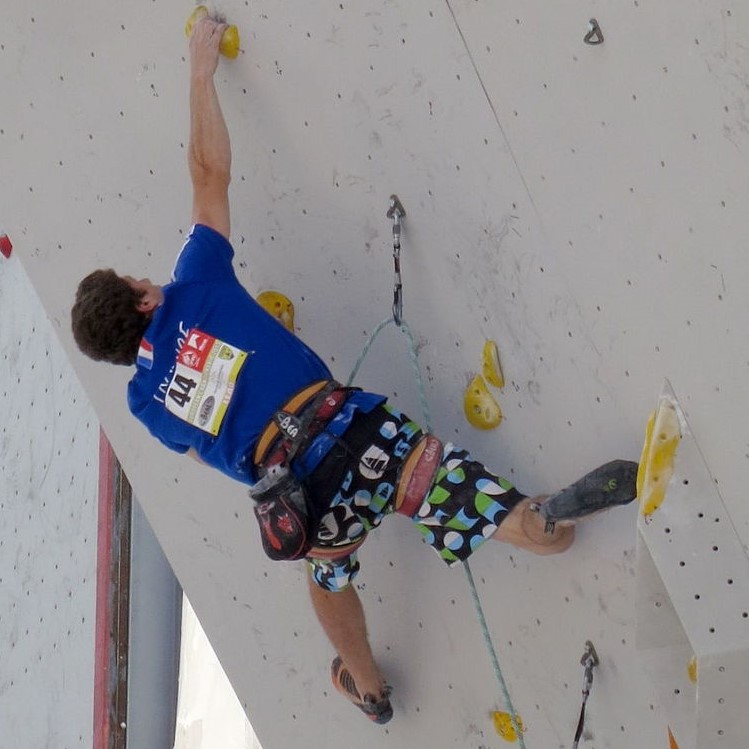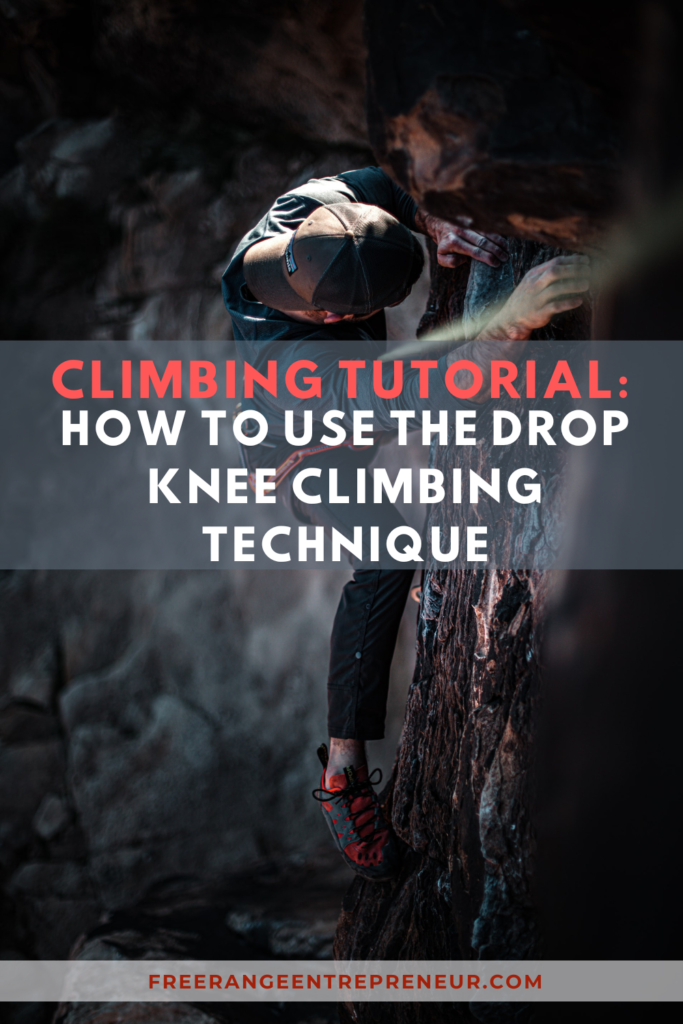Table of Contents
Drop Knee Climbing: How to Tutorial
The drop knee climbing technique, also known as knee drop, Egyptian (due to the shape of the body when employing the technique) or backstep It is a fundamental technique for producing hip stability and power.
What Is It Drop Knee Climbing Technique
The drop knee is a footwork technique that includes firmly loading the outside of one foot while pinning the other foot against another hold in order to build body tension. Swiveling the matching hip towards the wall and pressing the knee downwards are required for this position (hence the name). The drop knee is especially useful for maintaining stability and tension on walls even with considerably steep inclinations.
Why Would You Want To Drop Knee?
There are three major reasons why you should knee drop
1. Reach and thrust – Using a drop knee might help you reach holds that appear to be far away. When you lock in a strong drop knee, your hip moves toward the wall, bearing the majority of the weight of the corresponding leg, while your feet remain steady. This enables you to produce better upward thrust motion using your feet and hips rather than your arms. This will really enhance the overall range you can reach.
2. Stability and balance – Using a drop knee can assist you to balance better on the wall when climbing, allowing you to stay on comparatively poor holds. A drop knee shifts your centre of gravity downward. Because of your body’s improved stability this in turn provides the ability to reach a further distance, you have more time to refine your grasp on the next hold, a major benefit if said hold is lousy.
3. Lowers hand pressure – Using the drop knee climbing method on a regular basis reduces wear and strain on your hands and can contribute to injury prevention in your arms. It also helps when your arms are grasping slopers or crimps with insufficient leverage.
When Should You Use the Drop Knee Climbing Technique?
In climbing, the knee drop stance serves several functions.
1. Overhangs – Using the drop knee climbing technique to maintain your lower body near to the wall while extending your hand to hold the overhang. Drop your right knee, extend your hand, and then drive upward with your right hip when reaching with your right hand. If you’re reaching with your left hand, flip the sides.
2. Slopers or crimps – Crimps and slopers are difficult to grasp at the best of times and may not offer you with adequate leverage to haul yourself with your arms. Starting with a bent knee and thrusting up with your hip muscles, you can propel yourself to the next hold.
3. Wherever there are two good footholds – If a crag has two good footholds, utilise the drop knee method with one foot while anchoring with the other. Drop knees, on the other hand, should not be attempted while smeared on a sheer vertical face or with one leg engaged in a heel hook. A drop knee will shift your body weight away from the wall in such situations, which is not ideal and could be dangerous. Pushing your weight toward the wall is both safer and more efficient.
How to apply the Drop Knee Technique Correctly

The drop knee climbing method can be highly effective, but it must be practised correctly and in a safe way. Drop knee injuries to your medial collateral ligament (MCL) or meniscus may occur if you do not use the proper technique. The drop knee climbing method is typically safe and dependable with appropriate technique, a sufficient warmup, and a good pair of climbing shoes.
1. Begin by making contact with the wall with all four limbs. Check that you have adequate room to twist one of your knees into a lowered position.
2. Rotate one foot forward. As you pivot your foot outward, use your big toe as an anchor.
3. Bend your knee. Pull your hip in toward the wall as you bend your knee downward. Do this slowly, especially if your knee ligaments aren’t as flexible as you’d like them to be.
4. Start pulling with your opposite hand. If you are dropping your eft knee, carefully raise your body up with your right hand and vice versa.
5. Reach with your same-side arm that your drop knee is on and drive your hip upward. Reach with your left hand if you lowered your left knee. Push forward with your leg as you reach, utilising your hips for force and your big toe as an anchor. Allow this to push you to your next hold.
6. Re-establish four points of contact with the wall, then repeat as needed. When done correctly, the drop knee technique can be used repeatedly throughout the climb.
Some Suggestions for Practise
Drop knees can be used on every step of your warmup, including vertical climbs and traverses. The idea is to avoid bending your arms.
Swivel your hips and your feet between your drop knees on both sides. You’ll grow acclimated to the action and realise that bending your arms isn’t essential since you can produce all the upward motion you need with your legs.
Simply begin climbing straight up an overhanging wall with a lot of grips. Don’t be concerned with following paths; simply climb. Explore how far you can get by using a drop knee on every motion.
Drop Knee Risks and Injury Prevention
The drop knee is one of the most injury-prone climbing moves you will use. It’s important to properly warm up before attempting drop knees.
Never use it if you haven’t thoroughly warmed up. The following are some of the risks of injury linked with the drop knee:
- A knee strain – A small strain on one of your knee’s ligaments. This should mend within a few days.
- Meniscus and knee ligament injuries – Sometimes known as the ‘Unhappy Triad‘. These have the potential to keep you off climbing for an extended amount of time. You want to prevent issues with your meniscus in particular. Proper warm up of your knee joints will reduce the risk of injuries to your meniscus.
- A knee dislocation – This can happen when you follow a drop knee with a particularly dynamic move, or when you lose your balance and fall awkwardly.
When using this method, be extremely careful about how far you lower your knee. It depends on your flexibility, but the risk of injuring tendons, ligaments, and muscles around the knee is significant.
If you experience discomfort when drop kneeing (which normally occurs only on extremely steep walls or while pushing really difficult manoeuvres), drop to the floor for a rest. Also never jerk your knee into position. It is never worth risking a tear to your MCL.
Read:
- 14 Best Lightweight Men’s & Women’s Packable Down Jacket 2022
- Perfect Swing: Tim Ferriss Kettlebell Workout



Recent Comments